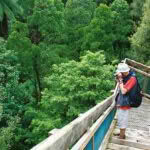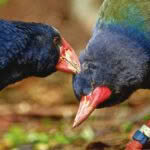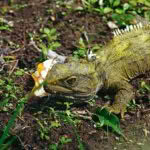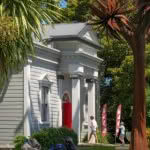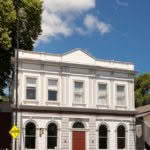5 of New Zealand’s quaintest towns
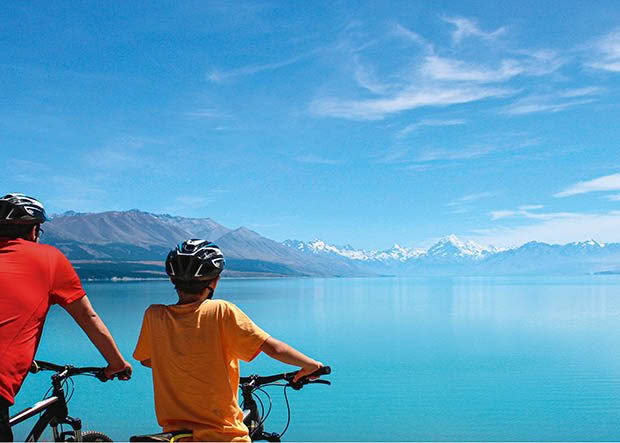
Enjoy a slower pace of life in some of New Zealand’s quaintest towns and villages, where one-of-a-kind shops, pretty architecture and scenic adventures take centre stage.
Twizel
The Ministry of Works built Twizel in the late 1960s to support the construction workforce for the dams and power stations on the Waitaki River. It boomed nicely in the 1970s when the settlement’s population nudged 6000, and its primary school was the largest in Australasia.
But once the hydro-doings were completed, the town was supposed to pack up and finish. It didn’t want to.
Twizel’s indomitable spirit has seen it retain its hold as a service town for aquaculture, hydroculture and agriculture. It also swells with tourists and those who know its watery secrets: it has five lakes (including Lake Ruataniwha – popular with rowers) and rivers and canals bulging with trout and salmon. It now hosts part of the Alps 2 Ocean Cycle Trail, and its yawning expanses made it to the big screen as the Pelennor Fields in the Lord of the Rings trilogy. It also shares some of that classy Aoraki Mackenzie International Dark Sky Reserve.
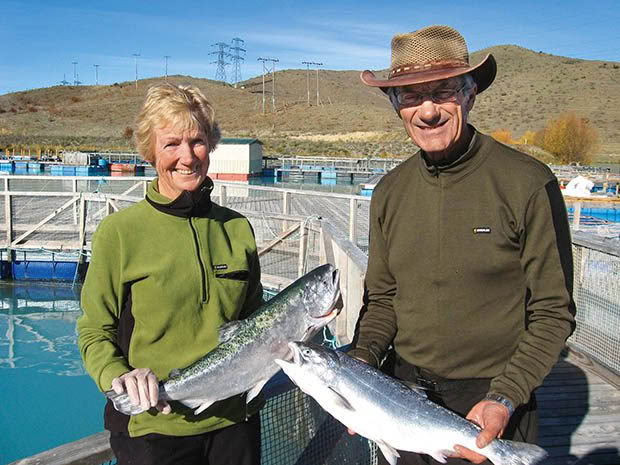
TWIZEL, FOUR WAYS
1. Stroll the Twizel Walkway. The easy three-hour loop kicks off from just about anywhere in Twizel and includes views of grasslands and alps, thick pine forests and surrounding waterways.
2. Swim at Loch Cameron, six kilometres from Twizel. The popular water hole, warmer than the larger lakes nearby, also has a tree-topped island that is well worth the cooling swim to reach.
3. Cycle part of the Alps 2 Ocean Cycle Trail, running along the southern shores of Lake Ōhau. Don’t forget to pack a picnic — take a lunch break under a tree at the lakefront to enjoy the peaceful alpine views.
4. Go fishing in the canals, which have some of the country’s best spots for salmon and trout.
Akaroa
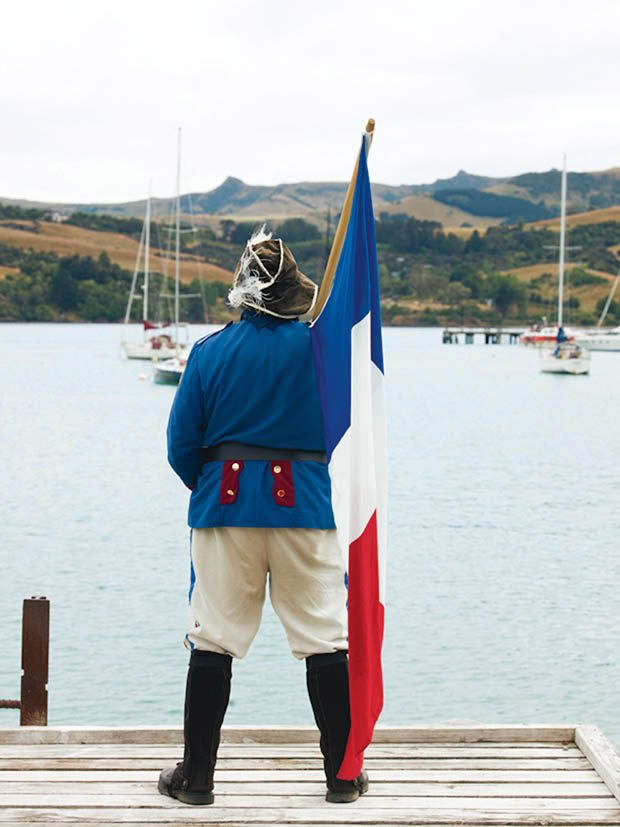
After a long drive from the flatlands of Canterbury to the hilltop marking the beginning of Banks Peninsula, it is compulsory to halt for a “wow” moment. The road drops away in a series of roller-coaster swoops down to the bay and – winking in the distance – is Akaroa. The British and the French colonists so loved Akaroa they almost came to fisticuffs over it before the Brits raised the flag, held court and proclaimed it theirs. Still, the French upheld their legacy by naming the streets (mostly “rues”) and in the rouge-blanc-et-bleu colour scheme adorning many shops today. The town centre is a designated historical place, and so it should be for its charming colonial architecture, all finely preserved. It is a wander-around and a peer-over-the-fence town, so pretty that even the gardens seem proud of themselves.
MUST-DO 1
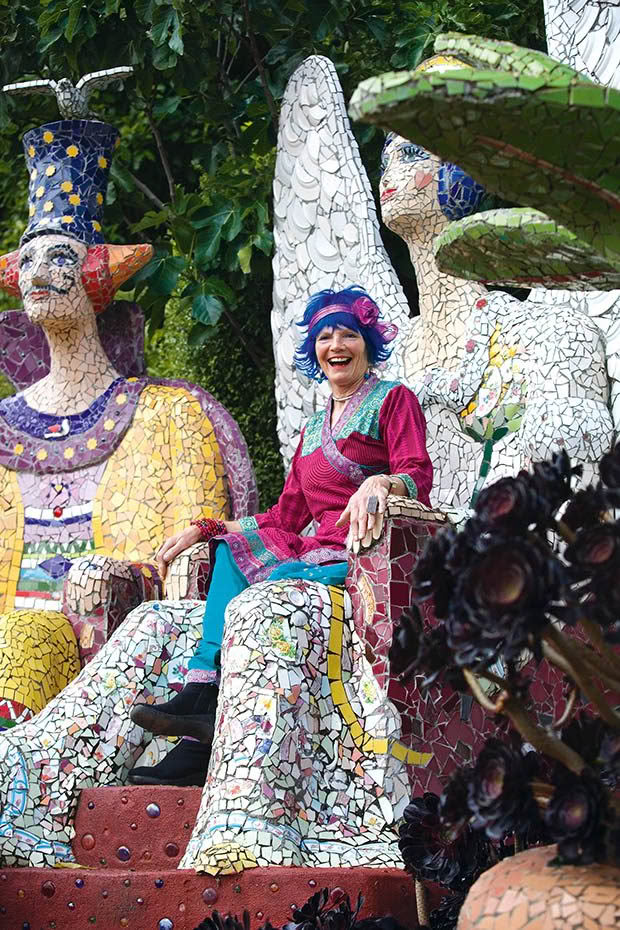
The Giant’s House is one of those mad spots that looks like the last place anyone would ever want to visit, but everyone is enchanted. It’s a sculpture garden with gigantic mosaic characters, probably best described as zany. So is its owner, artist Josie Martin, who has had some impressive artist residencies worldwide and some extravagant hair colours over the years. Words don’t really describe Josie or her property, which she keeps as neat as a new pin. Except for, perhaps, its Garden of International Significance title and the six-star rating it has held by the NZ Gardens Trust since 2018.
MUST-DO 2
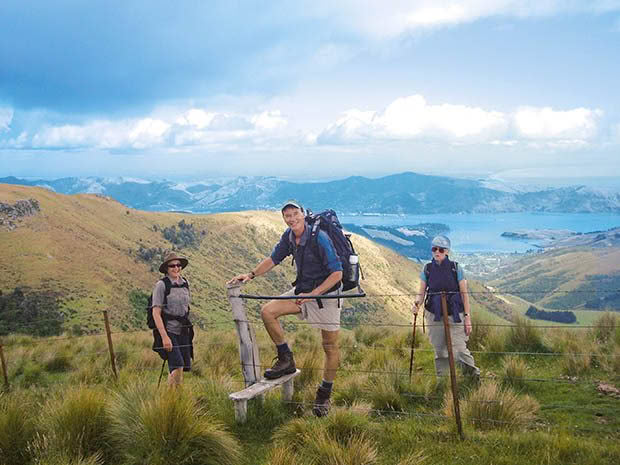
The 35-kilometre Banks Peninsula Track is one of the country’s first private walking tracks. It crosses private farmland through native bush with spectacular coastal views and quirky, comfortable accommodations.
The beauty is that it can be enjoyed by first-time walkers and serious trampers alike. Take cash for the bar at the accommodation and have packs carted in and out for a small fee. Most people do it as a four-day walk, which means walking a modest two to five hours a day with time to picnic, swim or kayak with the dolphins, seals and penguins at the marine reserve at Flea Bay. Accommodation is described as “huts”, but they’re much better than that — Stony Bay even has an outdoor bath to enjoy the stars.
Hanmer
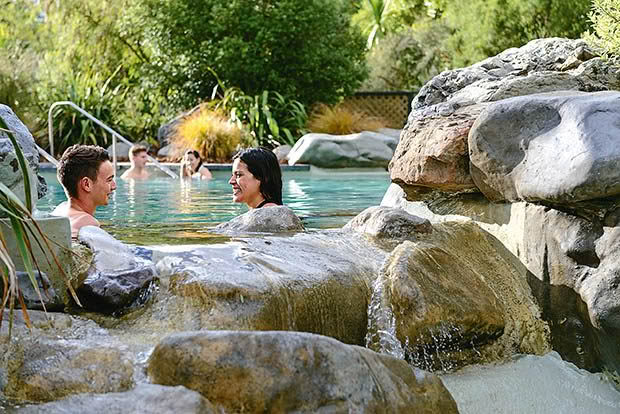
A funny thing happens on the drive to Hanmer. Some people feel the pace of life falls away once they have turned off State Highway One onto the quieter SH7 at Waipara, 45 minutes north of Christchurch. Others remain wired for a further 50 minutes, driving on the one-lane Waiau River bridge over a deep gorge. Ahead, nestling under a rim of mountains, they see the town itself.
As far back as the 1880s, the government invested in tourism through the thermal pools and – about the same time – began a massive planting of exotic forests. Who would have guessed that today the forests would be as much of a tourist attraction as the famed pools? Those forests now provide great walking and mountain-biking tracks, ranging from easy to extreme, most of them multi-use.
At the heart of this now-massive playground is the small town of Hanmer and what began it all, the Hanmer Springs Thermal Pools and Spa, now a modern, multi-million-dollar complex of 22 outdoor thermal pools. The publicly owned company’s vision is simple: to be the best thermal pools in Australasia.
WHAT’S IN THE WATER?
Hanmer’s thermal water comes from rainwater that fell about 170 years ago, seeping two kilometres through fractured rock into an underground reservoir. Heat radiating from the earth’s core raises the temperature. The water rises to the surface through fractures in the rock where it initially gathered in pools and today is captured, processed and treated for the town’s thermal operations. Then follows a complex water management process, including turning over the water in each pool depending on its use every one to four hours. Among the pool’s minerals are sodium (good for soft-tissue injuries and the likes of arthritis), silica (anti-ageing properties) and sulphur (good for skin health).
FOR SOMETHING DIFFERENT
Walk up Conical Hill — but not the usual way. Grab a track map from the i-site centre or your accommodation venue and walk to Squirrel Lake. Turn left towards the Majuba Track and follow it up towards Conical Hill on your left. After about one kilometre, cross to the cycle track for 500 metres, then detour up the path towards the rear of Conical Hill. At the top, cross the forest road and follow the steep path through the pine forest to the top, exiting behind the Conical Hill lookout. Enjoy the view from the lookout and walk back to the village by the traditional zigzag track. Allow just over an hour.
Cambridge
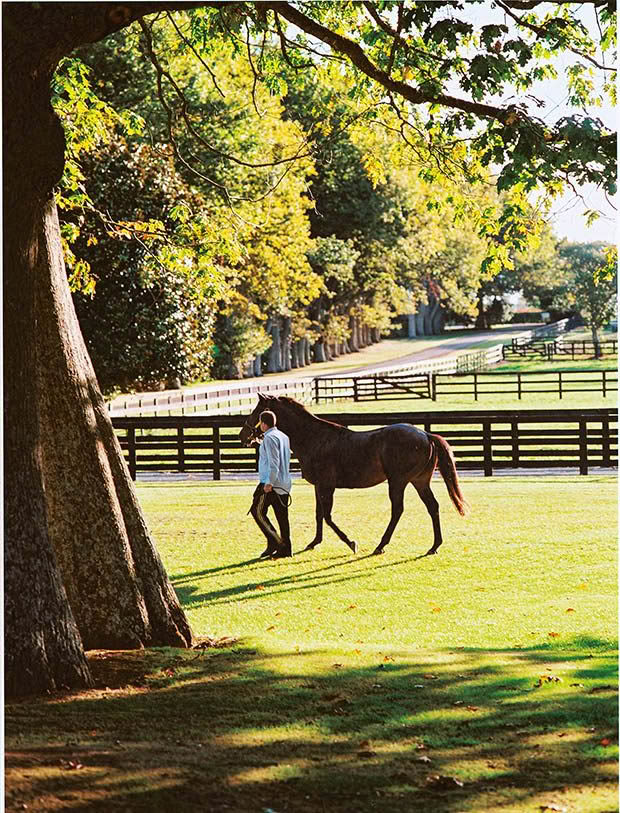
Excellence and elegance are two words that have become synonymous with the Waikato town of Cambridge. This tree-lined spot is as picturesque as they come, with the ribbon of the Waikato River as its finishing touch. Many people who call Cambridge home commute to nearby Hamilton (24 kilometres east) while living in the more relaxed, rural setting of one of New Zealand’s prettiest towns (it’s true, Cambridge won the Keep New Zealand Beautiful Most Beautiful Large Town Award in 2019). Though small, Cambridge is mighty, and many locals have made their name on the international stage in their chosen fields. Top cyclists train and compete at the Avantidrome, and many a jockey has found their match in these paddocks, with race-winning steeds bred in the area. The town pays homage to its equine legacy with a monument outside the town hall.
Cambridge is two hours from Auckland, 30 minutes from Matamata and 20 minutes from Hamilton and Tīrau.
MUST-DO 1
Even when all seems quiet, Sanctuary Mountain Maungatautari hides secrets… hollow burrows with softly snoring kiwi, kōkako in the treetops, takahē in the wetlands, giant wētā in the dark depths, tuatara
in the leaf litter. The 3400-hectare maunga is protected by the longest predator-proof fence in the world — 47 kilometres so well designed that even the sneakiest rat is yet to slip over its curved top. Anyone who walks this land is serenaded by a chorus of tūī, robin, kākā and hihi, all singing the sanctuary’s praises. The largest of the maunga’s three sections is Te Tūī a Tāne, with a 16-metre-high viewing platform and visitor centre. The northern enclosure has a variety of bushwalks and the Tautari Wetlands — one of the only remaining areas of wetland in the Waikato. Guided tours are available, lasting between 50 and 90 minutes. Guests who prefer their own pace can explore without a guide for a small entry fee — all proceeds go straight back to the land.
MUST-DO 2
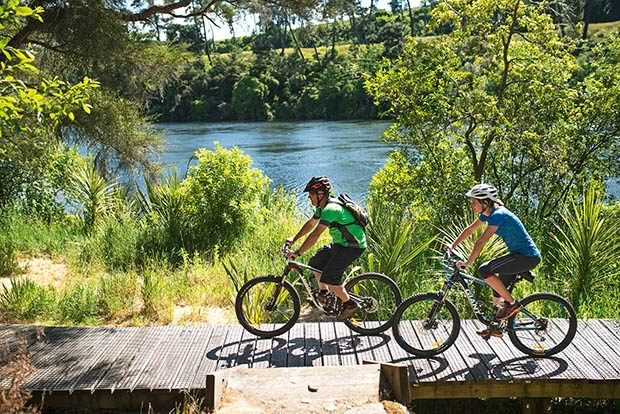
The cycle-trail mania sweeping the country has found a fantastic home alongside the Waikato River. Three official trails intersect on the generally flat plains around Matamata, Cambridge and Tīrau. The Hauraki Rail Trail (160 kilometres, three to four days) begins in Kaiaua (90 minutes southeast of Auckland) and ends in Matamata. The final section of the cycleway connects Te Aroha to Matamata and covers 38.5 kilometres, hugging the Kaimai Range and cruising through farmland. Cycle from Ngāruawāhia to Lake Karapiro on the Te Awa River Ride (70 kilometres, one to three days), otherwise known as the Great New Zealand River Ride. This ride is a mix of cycleways and roads and is suitable for all experience levels. The Waikato River Trail (103 kilometres, two to four days) begins at the Pōkaiwhenua Bridge at the southern end of Lake Karapiro and follows the river to Ātiamuri, 45 kilometres north of Taupō. There are five sections, each named for the lake they neighbour.
Greytown
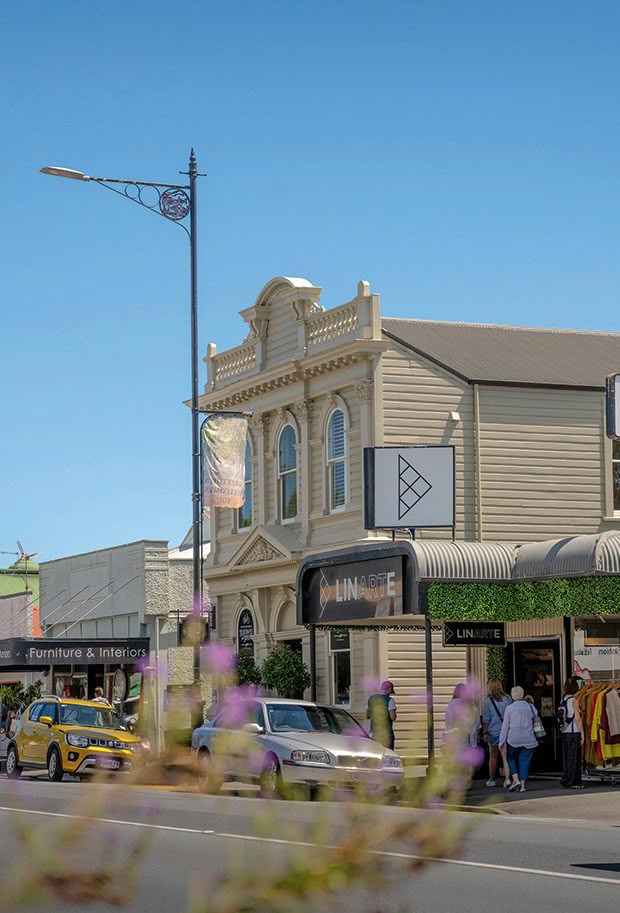
Greytown, between Carterton and Featherston, was founded in 1854 by the Small Farms Association to allow settlers to own a small piece of Wairarapa land. It evolved as New Zealand’s first planned inland town and still boasts the most complete main street of wooden Victorian buildings. Once the region’s largest settlement, it was dealt a blow in the 1870s when railway planners bypassed the township because of its flood-prone Waiōhine River. While it never recovered from the setback, its alluvial soils proved a continuing boon for berry and pip-fruit growing and market gardening. Today, the village is far more colourful than its name might suggest, with carefully restored Victorian buildings and rows of charming shops — think designer boutiques, quirky bookshops, cosy homewares and more. In July, the entire town lights up for the Greytown’s Festival of Christmas, a jolly month of twinkly lights, night markets, workshops, parties and more.
FUN FACT
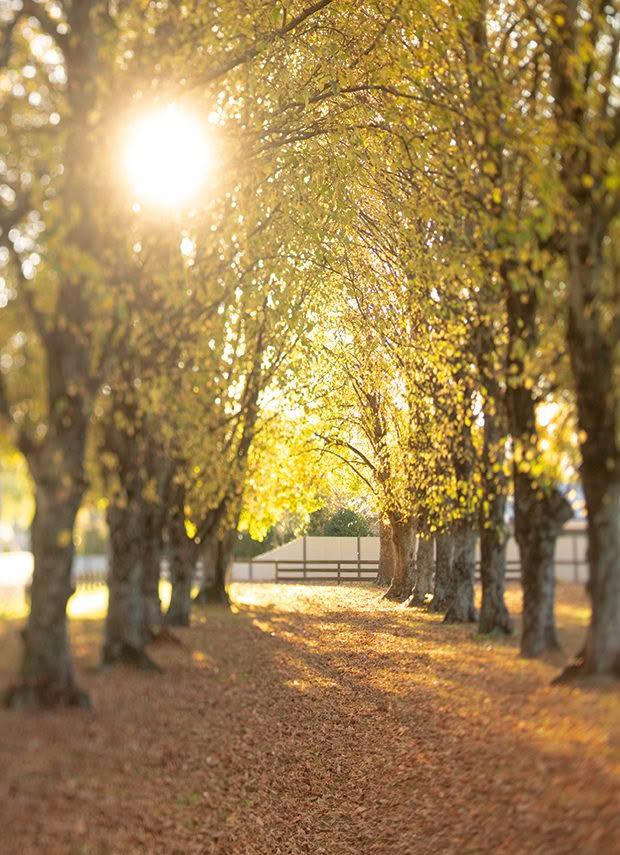
In 1890, Greytown staged the country’s first Arbor Day when 150 trees were planted on the roadside south of the town. Eight conifers from that original planting are still standing. Paradoxically, the acorn-planting pioneers felled much of the district’s original native forest to build Greytown and create pasture. But a remnant of that historic bush of totara, mataī, tawa and tītoki lives on, forming part of the eight-hectare Greytown Soldiers Memorial Park designed by Alfred Buxton, a leading landscape gardener of the time. An avenue of 56 lime trees and a host of old English beeches and elms are part of the original 1920s planting to commemorate the lives of local soldiers who died in World War I. The park is a 10-minute stroll from Greytown’s shops through suburban streets.
MUST-DO
History, architecture and heritage planting are the heart of Greytown. The best way to piece together the town’s past is to put on walking shoes and pay homage to an assortment of historic buildings and trees, all within easy walking distance of Main Street. Pick up the Greytown Community Heritage Trust’s brochure with details. Included on the self-guided walk is the Cobblestones Regional Early Settler Museum, a cluster of heritage buildings relocated to the site of Greytown’s original coaching stables. They include a colonial cottage, the old Greytown Hospital and the single-teacher 1902 Mangapakeha country school, all in period-appropriate style.
Love this story? Subscribe now!
 This article first appeared in NZ Life & Leisure Magazine.
This article first appeared in NZ Life & Leisure Magazine.
